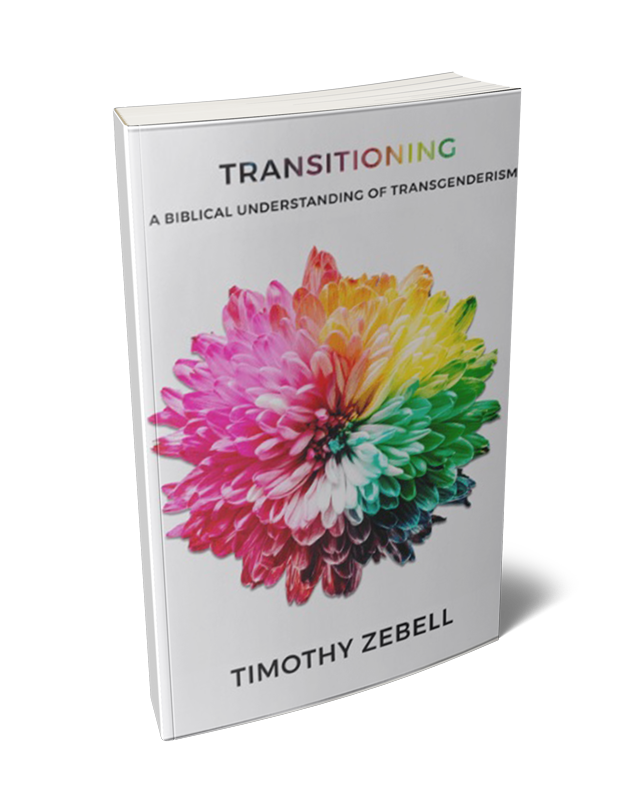Despite the fact that there is a concerted effort on both sides to change people’s sexual orientation, the standard mantra is, “Once gay, always gay.” This stems from the belief that people are born gay; therefore, they have no choice in the matter. In other words, the once gay, always gay argument is the practical application of an unsubstantiated theory that people are born gay. Nevertheless, it is common to hear dogmatic declarations such as in Kevin Naff’s Washington Blade editorial “Lock Up the ‘Ex-gays,’” “There is no such thing as ‘ex-gay.’ There is ‘repress-my-innate-immutable-characteristics-and-deny-their existence,’ but no such condition as ‘ex-gay.’ … Right-handed people can’t choose to be lefties, those with brown skin can’t choose white and gays can’t choose to be straight.”[1] Similarly, Eric Marcus wrote in his book Is It a Choice?, “No matter what anyone claims, you cannot change a person’s sexual orientation.”[2] And Robert Goss wrote in his book Jesus Acted Up, “All ecclesial attempts to change gay/lesbian sexual identities to heterosexual or demand that queers practice celibacy disembody them as human beings.”[3]
Homosexual activists afford absolutely no possibility of change in one’s sexual orientation, provided that the change is from homosexuality to heterosexuality. Beyond this, they are determined to silence all talk regarding such a possibility. To bolster their position these activists frequently call upon the mental health community for support. A representative example comes from the Gay, Lesbian and Straight Education Network’s publication Just the Facts:
The most important fact about “reparative therapy,” also sometimes known as “conversion” therapy, is that it is based on an understanding of homosexuality that has been rejected by all major health and mental health professions. The American Academy of Pediatrics, the American Counseling Association, the American Psychiatric Association, The American Psychological Association, the National Association of School Psychologists, and the National Association of Social Workers, together representing more than 447,000 health and mental health professionals, have all taken the position that homosexuality is not a mental disorder and thus there is no need for a “cure.”[4]
Impressive as this list of authorities may be, it is negated by the history of their decision in 1973 to remove homosexuality from the Diagnostic and Statistical Manual of Mental Disorders, which is considered to be the Bible of psychiatry and psychology. Dr. Simon LeVay summarized this history in his book Queer Science, “Gay activism was clearly the force that propelled the APA to declassify homosexuality.”[5] Through militant, but non-violent, confrontations and threats, homosexual activists pressured the American Psychiatric Association into capitulating to their demands, and this in turn led to the other mental health organizations accepting this diagnosis in order to maintain unity. Professor Ronald Bayer, author of the definitive work on the events surrounding the APA’s 1973 ruling, explains:
In 1973, after several years of bitter dispute, the Board of Trustees of the American Psychiatric Association decided to remove homosexuality from the Diagnostic and Statistical Manual of Psychiatric [sic] Disorders, its official list of mental diseases. Infuriated by that action, dissident psychiatrists charged the leadership of their association with an unseemly capitulation to the threats and pressures of Gay Liberation groups, and forced the board to submit its decision to a referendum of the full APA membership. And so America’s psychiatrists were called to vote upon the question of whether homosexuality ought to be considered a mental disease. The entire process, from the first confrontation organized by gay demonstrators at psychiatric conventions to the referendum demanded by orthodox psychiatrists, seemed to violate the most basic expectations about how questions of science should be resolved. Instead of being engaged in a sober consideration of data, psychiatrists were swept up in a political controversy. The American Psychiatric Association had fallen victim to the disorder of a tumultuous era, when disruptive conflicts threatened to politicize every aspect of American social life. A furious egalitarianism that challenged every instance of authority had compelled psychiatric experts to negotiate the pathological status of homosexuality with homosexuals themselves. The result was not a conclusion based on an approximation of the scientific truth as dictated by reason, but was instead an action demanded by the ideological temper of the times.[6]
Professor Bayer concludes, “It now seems that if groups of people march and raise enough hell, they can change anything in time.”[7]
For the first time, a mental health diagnosis was determined by popular vote rather than by the empirical data. To make matters worse, even this referendum is tainted by a scandal. Dr. Michael Brown explains in his book A Queer Thing Happened to America:
Understandably, gay activists were alarmed by the call for a vote, and behind the scenes, the National Gay Task Force (NGTF) helped compose and fund a letter to be sent out to all APA members, urging them to back the Board’s decision. But the NGTF was careful not to let the APA members know that it had anything to do with the letter since to do so would have been suicidal.
The letter stated that
“It would be a serious and potentially embarrassing step for our profession to vote down a decision which was taken after serious and extended consideration by the bodies within our organization designated to consider such matters.”
And so, a critically important letter ostensibly conceived and mailed by its signers (all of whom were key members of the APA’s Board of Trustees) was in fact the brainchild of gay activists.[8]
Beyond all this, an editorial published in the peer-reviewed journal Marriage & Family Review detailed how the key scientific study used by the APA during this process was, in fact, fraudulent. Known as the Hooker study, this study has been used in textbooks and court proceedings to prove that homosexuality could not be detected using standard psychological tests. In reality, Hooker’s test subjects “were unable to stop talking about homosexuality during the testing—a clear indication of obsessive compulsion!”[9] According to a report by the Family Research Council:
“This may be the first fraud committed by a scientific organization. As the Hooker study is so central to the ‘homosexuals are normal’ argument, its exposure reopens the question of whether homosexuals are mentally disturbed,” said Dr. Paul Cameron, one of the study’s authors. “The American Psychiatric Association defines a mental disorder as ‘associated with… a significantly increased risk of suffering death, pain, [or] disability….’ Given that homosexuals are at significantly greater risk of suffering mental and physical diseases—and this apparently leads to their shortened average lifespan—homosexuality would appear to qualify as a mental disorder.”[10]
Regardless of whether homosexuality ought to be classified as a mental disorder, it is clear that citing the authority of the mental health community as evidence that homosexuality is normal and that individual sexual orientation can never be altered is, at best, misleading. If anything, the mental health community has provided ample reason to believe that sexual orientation can be changed. In 2009 the American Psychological Association released a two-year study that concluded there is insufficient evidence to determine whether or not conversion therapy works. Significant is the fact that the task force was comprised entirely of activists in gay causes—most of whom were themselves gay.[11] Reporting on this shocking reality, Kathleen Melonakos warned, “Active homosexuals can hardly be objective about an addictive behavior they engage in themselves.”[12] Dr. Joseph Nicolosi explains:
The fact that the Task Force was composed entirely of activists in gay causes, most of whom are also personally gay, goes a long way toward explaining their failure to be scientifically objective.
To be “gay-identified” means to have undergone a counter-cultural rite of passage. According to the coming out literature, when a person accepts and integrates a gay identity, he must give up the hope of ever changing his feelings and fantasies. The process is as follows: the adolescent discovers his same-sex attraction; this causes him confusion, shame and guilt. He desperately hopes that he will somehow become straight so that he will fit in with his friends and family. However, he eventually comes to believe that he is gay, and in fact can never be otherwise. Therefore, he must accept his homosexuality in the face of social rejection, and find pride in his homoerotic desires as something good, desirable, natural, and (if he is a person of faith) a gift from his creator.
The majority of the Task Force members clearly underwent this same process of abandoning the hope that they could diminish their homosexuality and develop their heterosexual potential. Coming to the Task Force from this perspective, they would be strongly invested in discouraging others from having the opportunity to change—i.e., “If it did not work for me, then it cannot work for you.”[13]
Despite the inherent bias in favor of the homosexual position regarding whether sexual orientation can be changed, the best that this task force could do was cite insufficient evidence to determine the effectiveness of conversion therapy. In other words, if there were any evidence at all to suggest that conversion therapy does not work, we can be certain that this study would have concluded such. Of course, this is how the media attempted to spin the results of this study with headlines such as “APA Exposes Ex-gay Myth,” and “Psychologist Group Rejects So-called ‘Gay Therapy.’” Nevertheless, the very fact that this decidedly pro-gay study could not disprove conversion therapy essentially disproves dogmatic assertions that there can be no such thing as an ex-gay. Put another way, this study concluded that it may be possible for a person to change his sexual orientation—there simply is not enough evidence to be certain.
One thing is certain: We cannot dogmatically declare that a person is incapable of changing his sexual orientation.
Be sure to read Timothy Zebell’s book Laid Bare: Uncovering the Relationship Between Homosexuality & the Gospel.
Free Downloads
Share...
1. Brown, Michael. A Queer Thing Happened to America, 420–421. Concord: EqualTime Books, 2011.
2. Brown, 421.
3. Brown, 418.
4. Brown, 422–423.
5. Brown, 454.
6. Brown, 459–460.
7. Brown, 460.
8. Brown, 461.
9. “APA Fraud – Hooker Study did Not Prove Homosexuals are Normal.” Family Research Institute, October 9, 2012. Accessed June 19, 2014. http://www.familyresearchinst.org/category/audiovideo/.
10. “APA Fraud.”
11. Brown, A Queer Thing, 479–480.
12. Brown, 478.
13. Brown, 478.
Unless otherwise noted, all Scripture quotations are taken from The Holy Bible, English Standard Version, copyright ©2001 by Crossway Bibles, a publishing ministry of Good News Publishers. Used by permission. All rights reserved.









